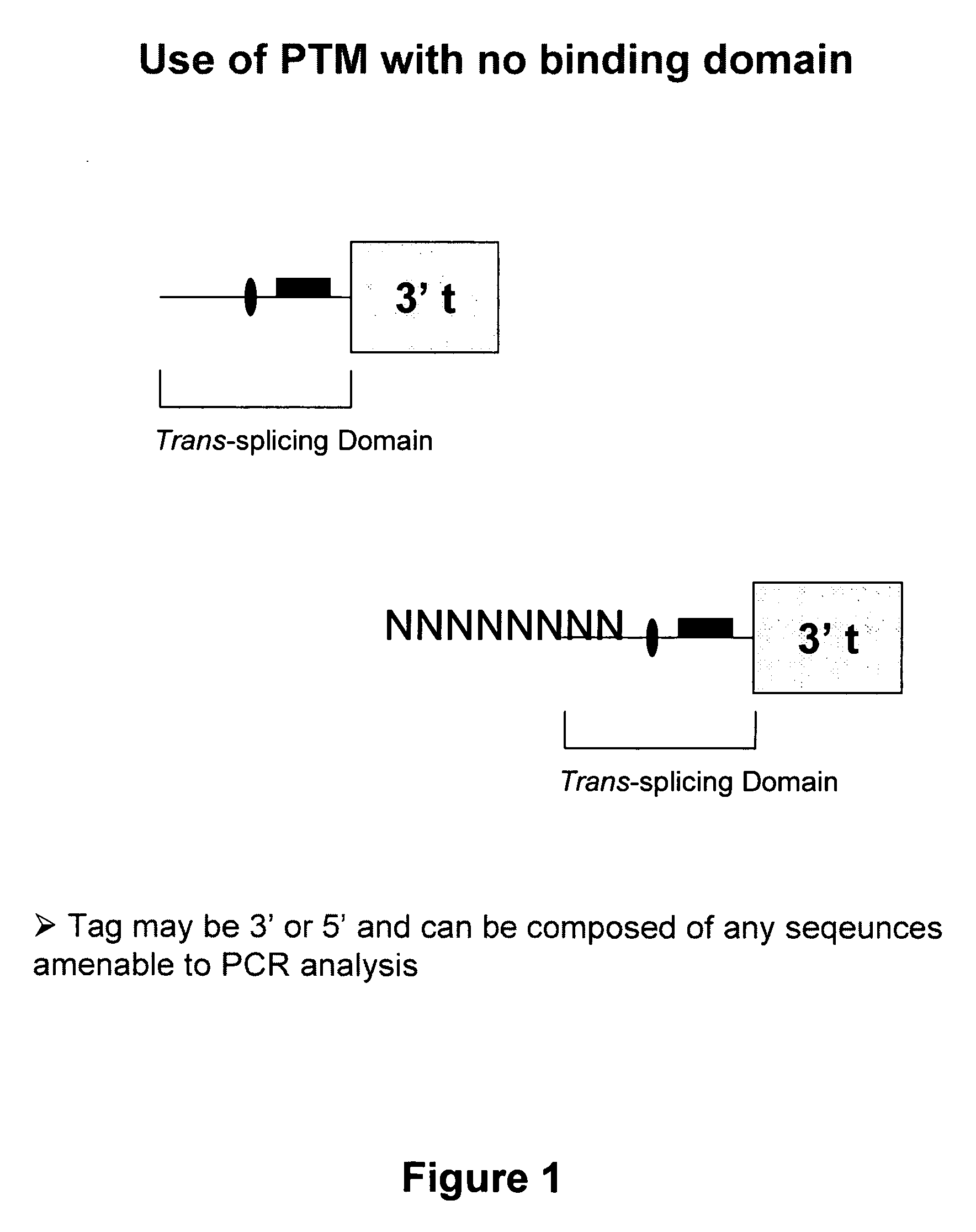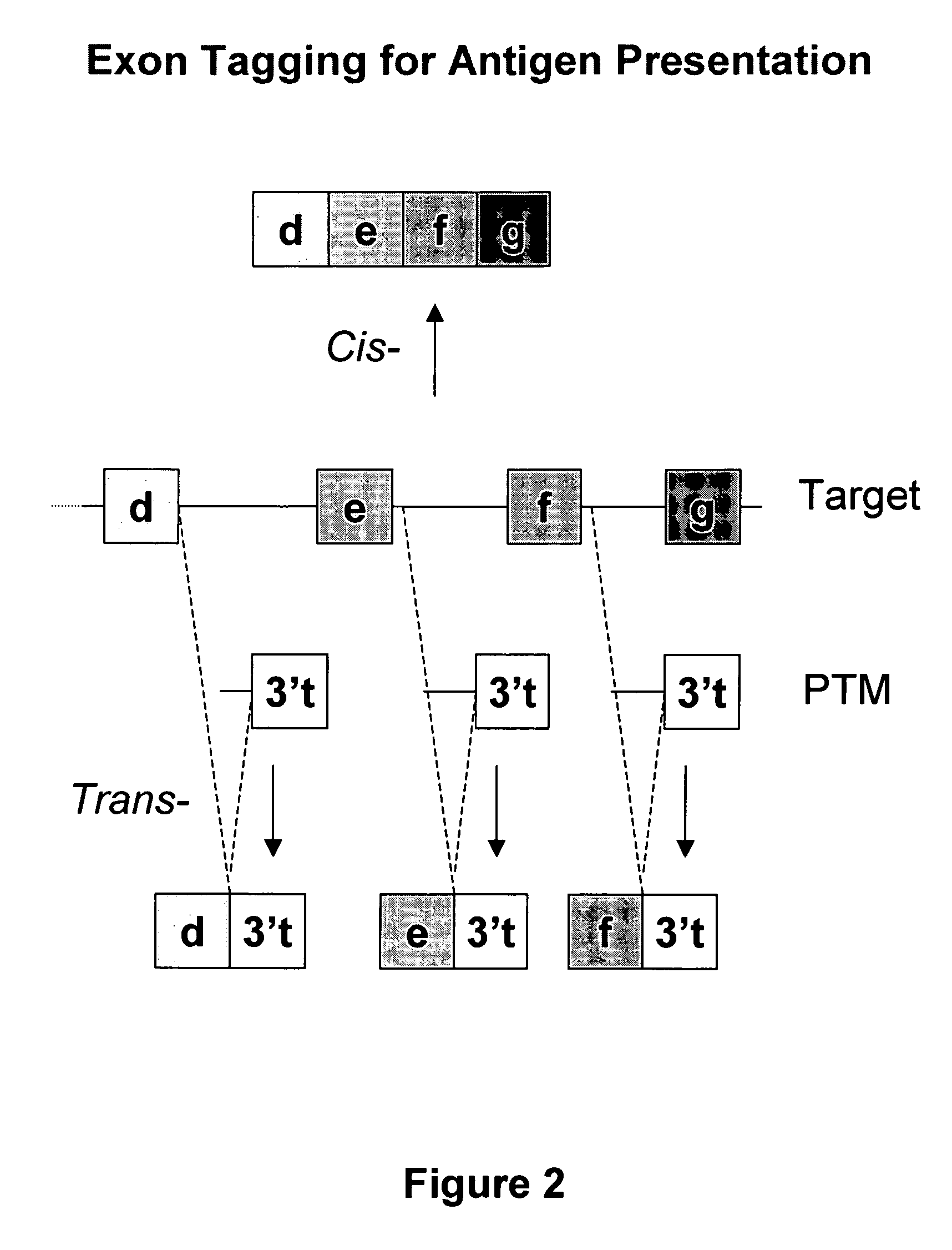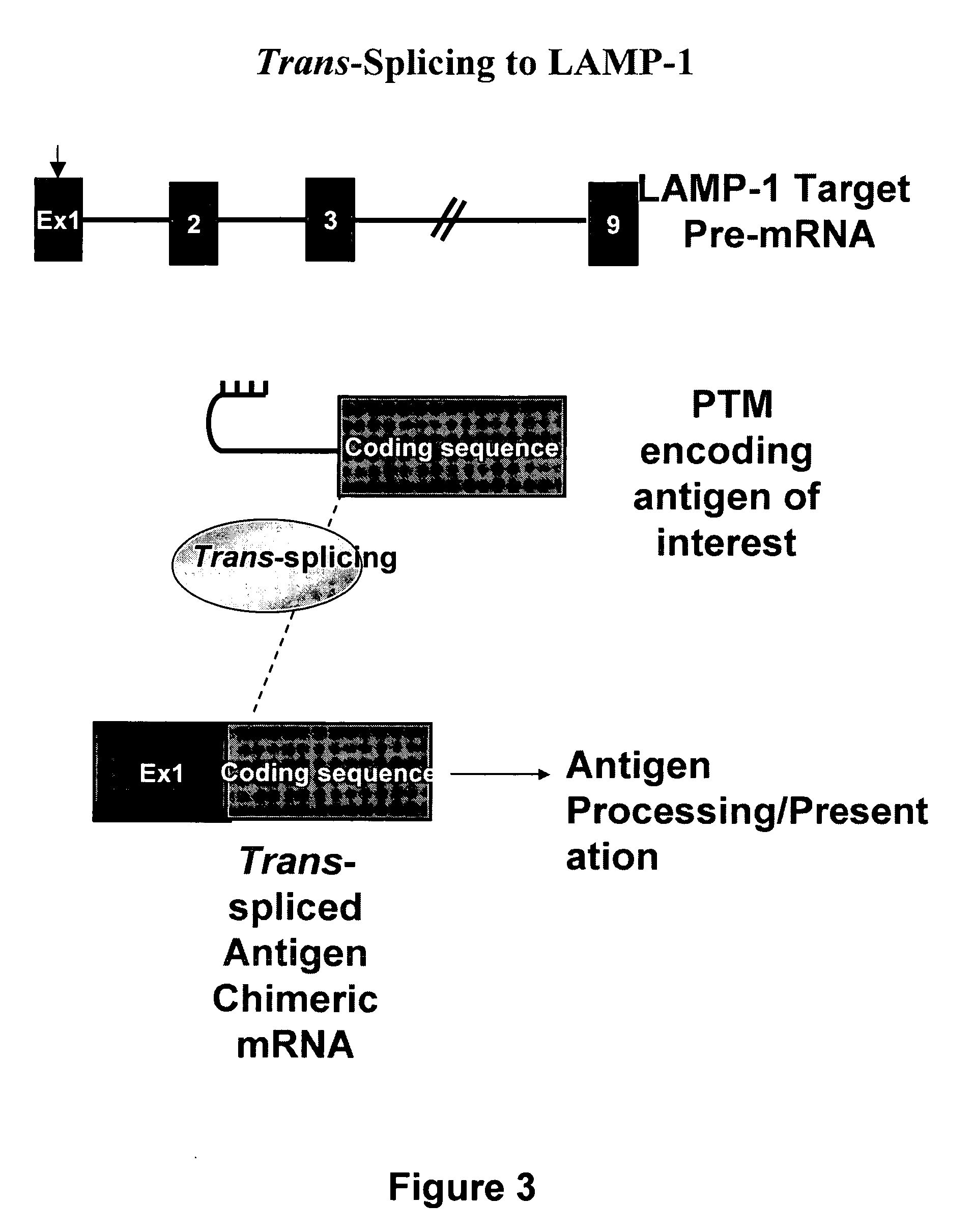Use of spliceosome mediated RNA trans-splicing for immunotherapy
a technology of rna transsplicing and spliceosomes, which is applied in the field of immunotherapy using spliceosome mediated rna transsplicing, can solve the problems of human disappointment, clinical studies, and human disappointment, and achieve the effect of stimulating a protective immune respons
- Summary
- Abstract
- Description
- Claims
- Application Information
AI Technical Summary
Benefits of technology
Problems solved by technology
Method used
Image
Examples
Embodiment Construction
[0030] The present invention relates to novel compositions comprising pre-trans-splicing molecules (PTMs) and the use of such molecules for generating novel nucleic acid molecules. The PTMs of the invention comprise (i) one or more target binding domains that are designed to specifically bind to a target pre-mRNA wherein said target pre-mRNA normally involves a protein involved in antigen uptake, presentation or chaperoning, (ii) a 3′ splice region that includes a branch point, pyrimidine tract and a 3′ splice acceptor site and / or a 5′ splice donor site; and (iii) additional nucleotide sequences such as those encoding an antigenic polypeptide of interest. The PTMs of the invention may further comprise one or more spacer regions that separate the RNA splice site from the target binding domain.
[0031] In a variation, the PTM could be without any specific binding domain, meaning that it will trans-splice randomly in any cell it enters, producing a collection of chimeric RNAs, as shown ...
PUM
| Property | Measurement | Unit |
|---|---|---|
| nucleic acid | aaaaa | aaaaa |
| frequencies | aaaaa | aaaaa |
| compositions | aaaaa | aaaaa |
Abstract
Description
Claims
Application Information
 Login to View More
Login to View More - R&D
- Intellectual Property
- Life Sciences
- Materials
- Tech Scout
- Unparalleled Data Quality
- Higher Quality Content
- 60% Fewer Hallucinations
Browse by: Latest US Patents, China's latest patents, Technical Efficacy Thesaurus, Application Domain, Technology Topic, Popular Technical Reports.
© 2025 PatSnap. All rights reserved.Legal|Privacy policy|Modern Slavery Act Transparency Statement|Sitemap|About US| Contact US: help@patsnap.com



